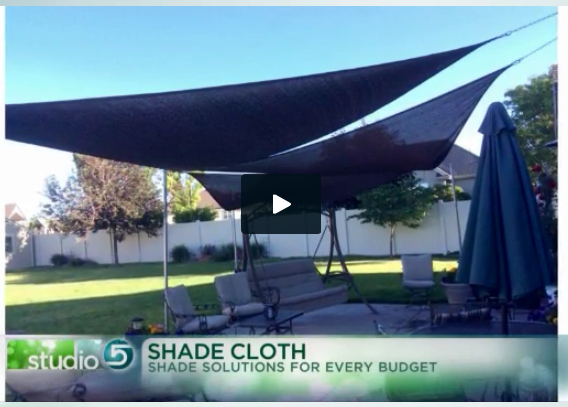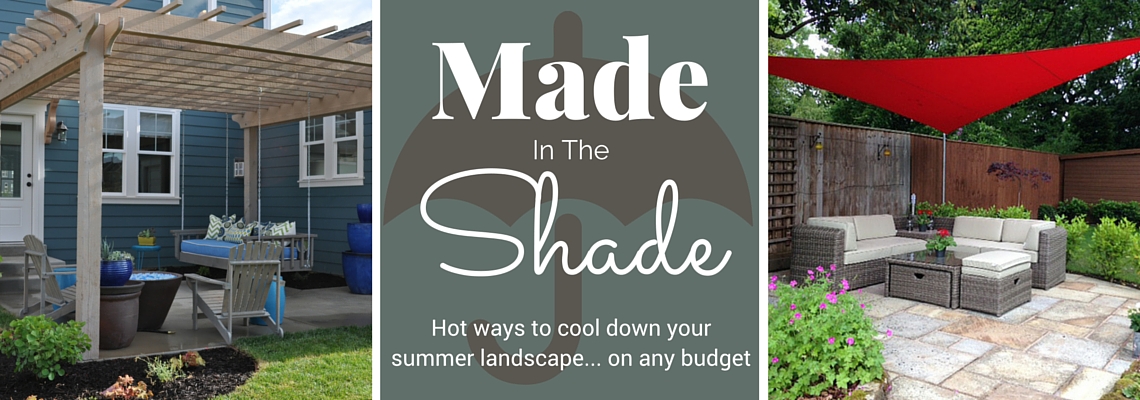
Made in the Shade
-
There are few things in the summer landscape that are in as high demand as shade. Shade is at a particular premium in new landscapes where few shade-producing trees can be found. Fortunately, there are both short-term and long-term efforts you can make to guarantee a shady spot to sit or play through all but the hottest summer days.
As with all things landscape, funds often dictate the solution so we'll showcase ways that shade can be added to you landscape on any budget. Below we'll share some of our favorite landscape solutions that either utilize plants or structures to create the cool. You'll likely want to try a few different options in various parts of your landscape. Don't let the summer sun drive you out of your yard!
1. Trees
Trees are the first solution most of us think of when adding shade to the landscape-- of course choosing the right tree is a whole different problem. The mistake many homeowners make straight out of the gate is letting the desire for quick tree growth get in the way of selecting a quality tree. Most often fast growing trees have weak branching structures that cause branch loss and make the tree susceptible to pests and diseases. Further, quick-growing trees often reseed or sucker.
Luckily, there are some Utah-happy trees that grow relatively fast while remaining structurally solid. The key is not only picking the right tree but also putting it in the right place. A tree located CLOSER to the home will produce useful shade and privacy more quickly than a tree on the property line. However, placing it too close to the home can be a problem. Always read the plant tag and place the tree at least half the distance of the predicted width from the house. For example, if the tag says the tree will grow 20 feet wide, it should be planted at least 10 feet away from the house. Placement relative to the sun is also important. If the goal is mid to end-of-day shade, trees should be west and or south of the area to be shaded. Trees planted on the north and east will shade early to mid-day.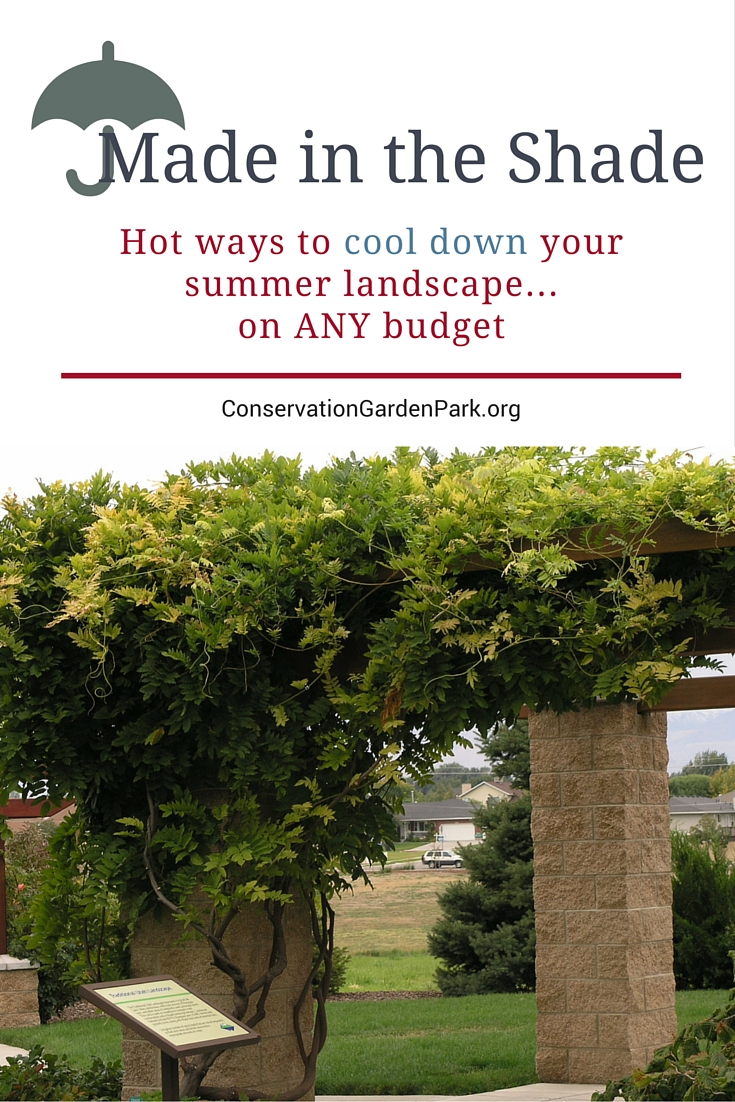
-

-
2. Shade Cloth
Shade cloth is a loosely-woven fabric, usually made of polyester, that can block between 5 and 95% of light depending on the grade purchased. Shade cloth can be used as a temporary or seasonal source of shade for plants and people. Please note that this fabric is permeable and both air and water can pass through it making it an excellent choice for shading garden beds. The permeability also reduces the chance of the shade cloth becoming a sail in windy weather-- though you should be aware that it can happen and take measures to prevent such an occurrence.
Shade cloth works great to cover your vegetable garden and can be found at any good nursery center. To cover patios, play areas or other zones where people will be, a good-quality shade sail is a better option. Shade sails are designed for this application and have reinforcement where needed. Read installation instructions and wind limitations carefully and follow them to the letter to avoid safety issues. Shade sails are a low-cost way to solve a hot problem in a way that won't kill the budget. -

-
3. Patio Covers & Pergolas
Although more expensive than shade sails, patio covers and pergolas offer varying degrees of shade and protection from weather. Patio covers are most often a project for professionals but pergolas can be a do-it-yourself project depending upon your skill level. Kits are available locally from Western Timber Frame.
Building your own pergola from scratch works too if you have a moderate skill set. The biggest mistake do-it-yourselfers make when building their own pergola is undersizing the timbers. This is especially problematic if the pergola posts will not be set in concrete in the ground. Generally, 6x6 posts should be the minimum post size (not the more popular 4x4 posts) in order to ensure the pergola is structurally sound and that the top portion of the pergola doesn't look like it might crush the bottom portion.
-
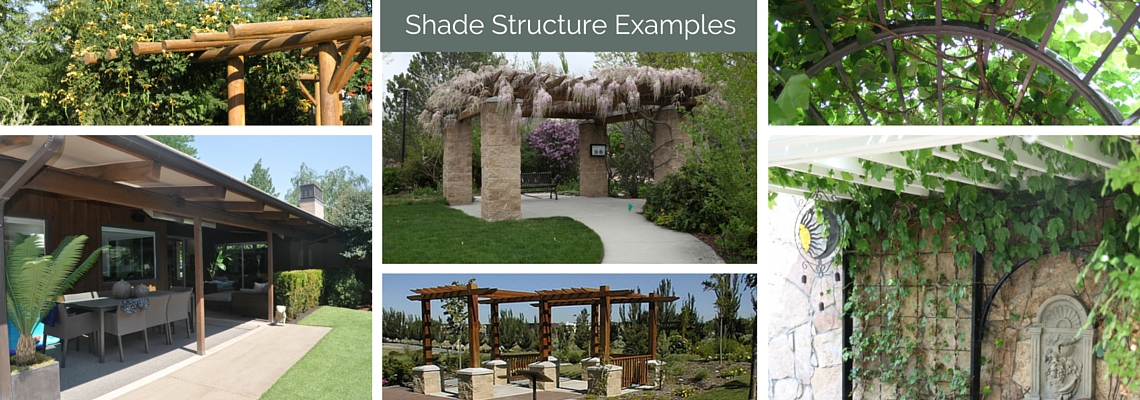
-

-
4. Vines for Shade
Of course, the open pergola structures above may need additional shade coverage. This can be accomplished with shade sails installed on the pergola or through the use of vines. There are a number of drought-tolerant vines that work well but my personal favorite is Golden Hops for one simple reason-- it dies back to the ground each year. Don't fret! It grows quickly and after a few years will easily cover the structure before the heat arrives.
Structures require maintenance and fresh stain/paint from time to time. Vines can get in the way of this maintenance function making it a much more difficult chore. Golden hops will be out of the way early in the season offering an excellent window of opportunity for simpler maintenance. Other vines such as Virginia Creeper offer a similar benefit. Vines which remain on the structure year round are okay to use, especially on metal structures that do not require staining and painting.
Other considerations for vines are the size and weight of the vine. Wisteria grows wonderfully in Utah but when placing it on a structure one should keep in mind that it's basically a tree with no strength. This issue is illustrated in the "Pergola Problems" photo. -
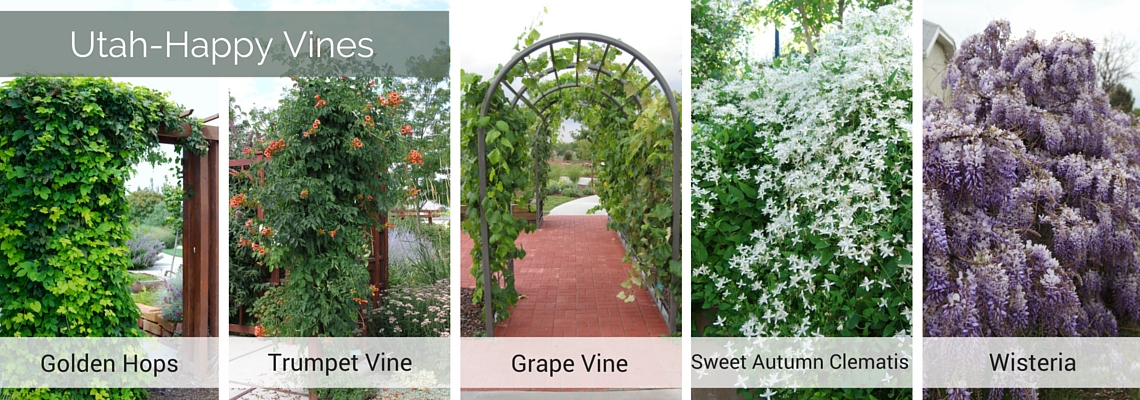
-
5. Shade from Low-Angle Sun
Depending upon the time of day your shaded area is used, low-angle sun can be an issue. Early in the day, spaces on the east side of a property will be exposed to low-angle sun and west-facing areas will experience the same effect in the evening. Creating some vertical shade may also be important in these spaces.
Larger shrubs can provide quality screening, assuming there is space to work them in. For narrow areas, 'Fine Line' Buckthorn is a favorite, growing 8 feet tall yet naturally remaining a compact 18" wide. Other favorite screening shrubs are 'Black Tower' Elderberry, 'Helmond Pillar' or 'Sunjoy Pillar' Barberry. An evergreen option for shadier spaces would be the columnar 'Hick's Yew'.
Of course, there are some quick ways to create instant "side shade" such as installing bamboo roller shades or outdoor curtains on the structure. I've enjoyed creating a number of "green wall" projects over the years and structures offer an excellent place for such a project. My preferred plants for green walls in our arid climate are succulents and waterwise herbs.
When done well, shade structures improve the usability and curb appeal of a property. When placed near the home, they may even help lower your summer cooling bills-- this is especially true for trees. Consider the above strategies to make your landscape more inviting this year!
-
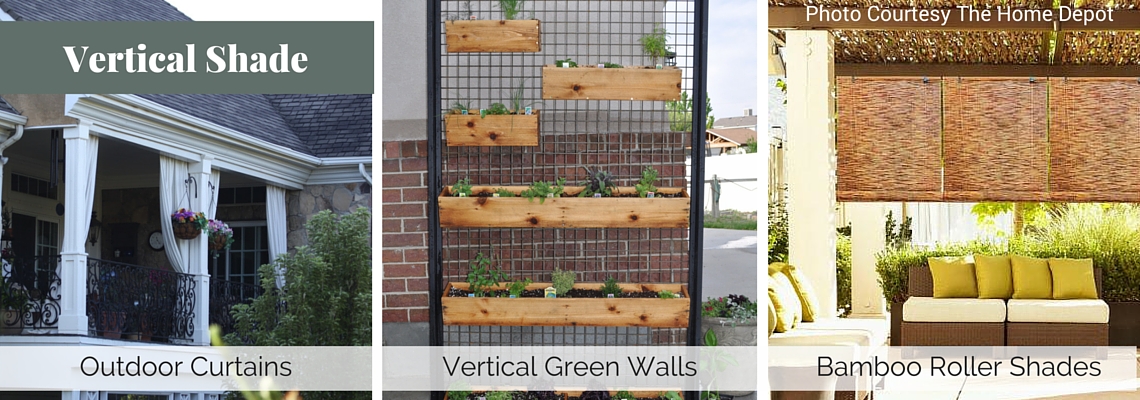
-

